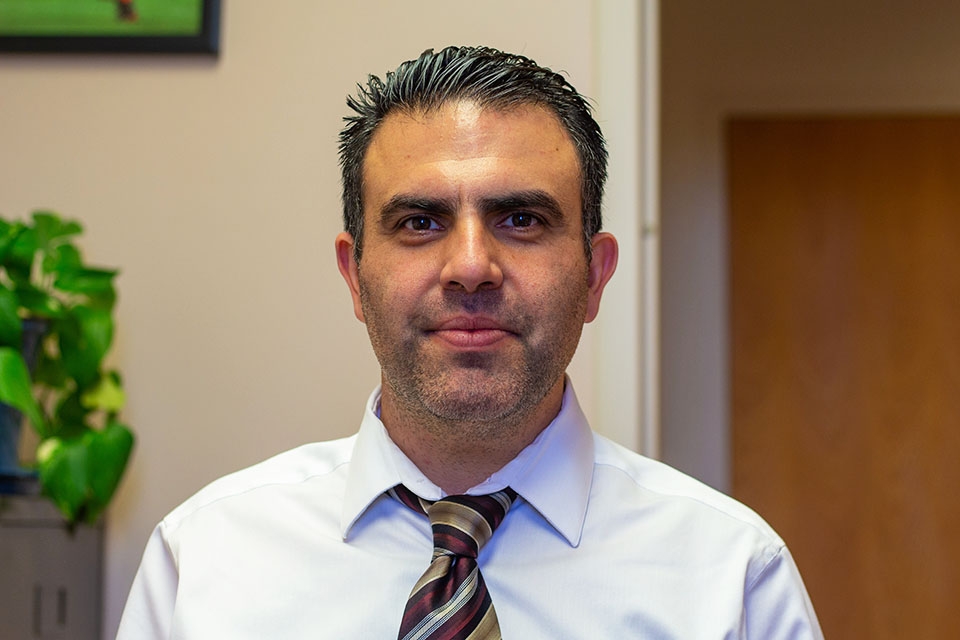
By Ollie Gratzinger | Features Editor
11/30/17
What makes a man start fires?
That was the question posed and investigated by New York Times writer Richard Fausset as he delved into darkness to profile American Nazi Tony Hovater, who marched alongside other white supremacists in the deadly Charlottesville “Unite the Right” rally held this past August.
The story, published on Nov. 25, attracted feedback that the Times itself called “sharply critical,” as many regarded the article as little more than a fluff piece serving only to normalize the horrendously reproachable ideals associated with the ever-growing American Nazi movement.
Talk of Hovater’s wedding with the woman with whom he was “young and in love” with found a place in the piece. His fondness of TV shows like “Twin Peaks” and “Seinfeld” was sandwiched between a romanticized description of Ohio’s row crops and rolling hills and a link to a website called Radio Aryan, on which Hovater had been an “occasional podcast guest.”
On his arm, there rests an innocuous tattoo of apple pie – an age-old symbol of the American Dream – and in his home, books about Hitler share a shelf with video games for the Nintendo Wii. A strange and uneasy dichotomy, certainly, and a dangerous subject for a journalistic feature, if not handled with the utmost care.
There’s validity to the criticism that the Times has faced in response to this article, being that its purpose still remains somewhat unclear. Does it aim to humanize a Nazi? Or does it strive to feature the eerie notion that evil, sometimes, looks like a newlywed’s smiling face?
There exists a certain cogency to the latter, to showcasing the fact that the true face of Nazism in 2017 looks different than it might have in decades past. In place of German propaganda posters and men in uniforms storming Jewish storefronts, anti-Semitism has taken a more familiar form: Nowadays, the American Nazi may very well be the Boy Next Door.
That’s worth discussing. That’s newsworthy. The issue, then, is that the New York Times article blatantly fails to deliver this impression, opting instead for a soft-edged profile that seems to scream, “But Nazis are people too!”
Yes, Nazis fall in love and grocery shop and register their weddings at Target. Yes, Nazis hope and dream and fear and want. But how does that vindicate their destructive behavior? And how about the millions of Jews, homosexuals, people of color and religious/ethnic minorities who were once permanently deprived of those things as a result of said Nazi violence? That right to dream, to be human, was stripped of the individuals persecuted under the merciless, fascist regime that prospered during World War II. So why, then, should we, as journalists, shine a light on the humanity of a modern American Nazi who remains steeped in the same ideals that, over 70 years ago, led to a humanitarian crisis and global catastrophe?
To publish this piece was irresponsible at best, and, at worst, disrespectful to the historical narrative and the memory of those who suffered beyond definition. It isn’t enough to wonder what makes a man like Hovater start and rekindle the fire of white supremacy – a fire that has been burning since the dawn of white colonialism. Rather, the question that should be asked ought to address what we as a nation can do to extinguish that flame so that generations to come may never have their sight obstructed by its smoke.
We must ask why Hovater, who prides himself with his participation in the Charlottesville incident that claimed the life of Heather Heyer – whose name, by the way, was never mentioned in the Times article – gets a profile complete with a picture of him perusing the aisles of a local grocer, while the media remains riddled with mug-shots and crime scene photos depicting and demonizing young African Americans who fell victim to similar – if not the same – schools of thought.
Under no circumstance should Nazis be treated with more dignity than victims of white supremacy. Heyer, for example, wasn’t granted the privilege of any of those things Fausset writes that Hovater and his wife want to do. Heck, she wasn’t even granted the privilege of being called by her name in an article normalizing the man whose ideology killed her. She was reduced to the “left-wing protester” killed by a white nationalist – an event which Hovater called historic with the phrase, “hail victory,” which may be better known as the German equivalent, “Seig heil.”
“There are times when it can feel toxic to openly identify as a far-right extremist in the Ohio of 2017,” wrote Fausset. This line, specifically, felt improper. It feels toxic to identify as a Nazi? Good! As it should. Those people make it feel toxic to identify as a Jew, a member of the LGBT community, a person of color and basically anyone else who isn’t a well-to-do white man. The same folks that demean liberals for wanting a safe space turn around and, in the next breath, demand a platform for their vitriol, or else.
The article also describes a picture shared by Hovater on his Facebook account, depicting a hypothetical what-if scenario in which Germany had emerged victorious from World War II: “A streetscape full of happy white people, a bustling American-style diner and swastikas everywhere,” the article describes, accompanied by a caption written by Hovater, which reads, “What part is supposed to look unappealing?”
The unease a rational mind might feel in regards to the post’s description is the same kind of unease one feels in response to the article: The blunt Americanism of a diner setting seems to fit uncomfortably next to the image of ample swastikas. Similarly, the paradoxical imagery of a Nazi’s apple-pie tattoo clashes with the perturbed incongruity between a pair of happy Nazi newlyweds and a liberal woman dead as a result of their amoral bile.
The article fails to deliver what might have been the author’s true point, and it therefore falls short of everything it could’ve been, but wasn’t. We live in an age where reporters cannot afford to be sloppy; from the right-wing cries of “Fake news!” to the ease at which folks sympathize with evil when it looks more like them, it is the responsibility of journalists to provide a platform that criticizes the actions of white supremacists rather than making their deeds seem standard.
We mustn’t allow the criminal bigotries of yesterday to be accepted as the new normal today, lest they become the horrors of tomorrow.




